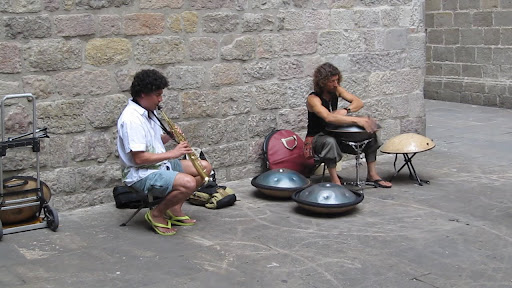Sitting on a Ryanair flight from Perusia to Barcelona (although, not really Barcelona, Girona which is in fact about 1.5 hours drive from Barcelona) I was feeling pretty damn tired from the days events and I was trying to nod off without leaning on the bloke next to me. Unfortunately, I wasn't able to sit next to my wife as despite being near the front of the line, the crew had opened the front doors to the plane at the last minute. We were foolishly waiting at the back door where we'd been directed by cabin crew and as a result we were one of the last to get on when the front of the plane quickly filled.
I was listening to some music with the faint sound of the cabin crew messages filtering through when I could have sworn I heard them explaining why you couldn't smoke on a plane. Surely nobody was trying to smoke on the plane? No, they weren't - the crew were actually selling nicotine fixes to addicted ciggi smokers - smokeless cigarettes that don't contain tobacco, but do contain nicotine. Are you serious???
This got me thinking a little more about Ryanair and they way the operate. Despite some recent losses, Ryanair has been one of the worlds most profitable carriers for years and their approach is pretty simple. Very basic service (a seat, a seatbelt, hopefully a life jacket) for an extremely cheap price. The main differences with Ryanair are:
- No allocated seats - you fight for your seat when you get on or get 'priority boarding' for a fee
- No meals - if you want one you can buy one.
- No baggage allowance (you pay individually for each bag you check) and luggage limits are watched closely.
- No flexibility to change (once the ticket is sold it can't be changed)
- Fly from locations that cost them less (see previous comment on their Barcelona location)
A shed load of revenue is made as ancillary revenue (from means other than tickets sales) and this is evident all throughout the entire flight. The once customer service oriented flight attendants are now selling machines. They efficiently and pleasantly go through the take off saftey routing and then once you are securely belted in, the sales barrage begins with everything you'd expect such as food and grog being offered, to everything you wouldn't expect such as bus tickets, lottery tickets and smokeless cigarettes.
I quite like the simplicity of their model move heaps of the cheapest, simplest non-flexible product, and product users will pay extra for what the services they want. You are getting what you pay for - A to B, cheap and quick.
Not always...
To get from Sienna to Barcelona I had to:
- Get a bus from our hotel in Sienna to the Sienna train station. (4 Euro)
- Get a bus from the Sienna train station to Perusia train station. (14 Euro)
- Wait and hour for the airport shuttle which turned up with only 3 seats left - despite us being the second people in line, a lovely family who had just arrived 5 minutes before the bus got there pushed in front of us and the other 20 odd people waiting so we were forced to get a taxi or risk missing our flight (25 Euro)
- Buy some food at the airport cause we weren't going to eat for the next couple of hours (10 Euro)
- Compete in the shitfight line up for nearly 1 hour before the flight was boarding closely followed by the shitfight to get a seat next to my wife (didn't happen - see earlier comment).
- Buy bus tickets from Barcelona Girona airport to get us into Barcelona (1.5 hour trip - 12 Euro)
So really this trip from Sienna to Barcelona cost us: Flights ~ $40 Euro, Transportation / food etc other than flight ~ $70 Euro - Total $110 Euro.
Not that bad really, but here's the clincher for me. Our day started at 8 am and finished at 9:30pm - an entire day for what really should have been a pretty short travel experience.
On our overall trip we had a couple of these days which resulted in ultra early checkouts for 7am flights from whoop whoop, our earliest checkout being 3am to make a 7 am flight.
In the end, I can't complain as this is part of planning and once again, getting what you pay for but given this experience (and limited other travel experience) I see there being 3 types of carriers:
- Tier 1: Big boyz - E.g Qantas, British Airways - expensive but you get a meal, as many drinks as you can consume, movies etc etc... but it costs you
- Tier 2: Low cost carriers - E.g. Virgin Blue, Jetstar (not sure of the european equiv) where you get the basics included such as baggage, allocated seats etc at a reasonable cost. If you want to watch a movie, get some food you can do so, just pay for it, also at a reasonable cost.
- Tier 3: Thrifties - E.g Ryanair - do the hard yards to get to where they fly from, run the gauntlet to the plane and you'll get a seat, next to your friends if you're lucky. On the flight you can buy pretty much anything you can think of.
Not wanting to be biased to the Aussie low cost airlines, but given my experiences to date, the Tier 2 wins for me with the biggest advantages being flying from major airports, allocated seats, a customer centric service, all at a reasonable price.







